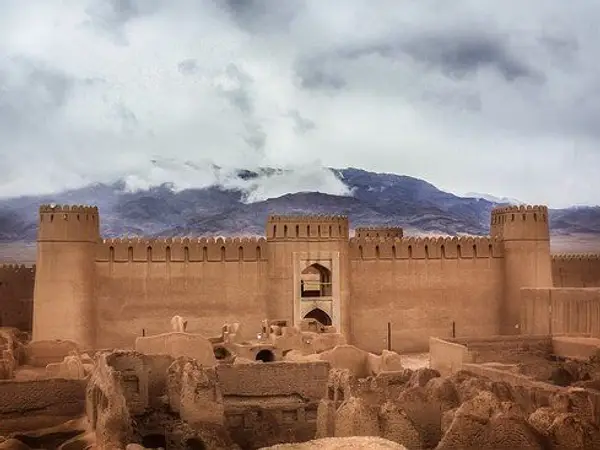Iranian media say the government’s plan to lease historically important buildings for business development is tantamount to “auctioning off Iranian heritage”.
“What will the role of the government be in preserving the country’s historical heritage if the ministry … grants the lease of all historical sites for business development,” reformist Sazandegi newspaper wrote in an article Tuesday, entitled “Auctioning Off Iranian Heritage: A Report on the Auction of 19 Historical Buildings”.
“Should we expect Persepolis, the tombs of [national poets] Hafez and Sa’adi [Shirazi] and the Naghsh-e Jahan Square [in Isfahan] to be also put on offer for business development?” Sazandegi asked.
The plan was disclosed last week by the semi-official Iranian Students News Agency (ISNA) which provided the names of the 19 culturally and historically significant buildings on the auction list of the cultural heritage, tourism, and handicrafts ministry.
Ehsan Dehghani, an official of the ministry, told ISNA that the auction for granting the leases for business development projects, such as turning them into hotels and restaurants, will be held by the ministry on May 22.
One of the most significant buildings on the list is the Rayen Castle, an adobe castle in Kerman Province which is believed to be 1,000 years old, possibly with much older foundations dating to pre-Islamic times.
Another building on the list is the country residence of Nasereddin Mirza, a Qajar prince. The building was confiscated from the prince’s heirs, like many other buildings owned by members of the Pahlavi and Qajar dynasties, following the Islamic Revolution of 1979 and is owned by the government now.
The plan is part of the massive scheme of President Ebrahim Raisi’s government to liquidate public assets. A seven-man team endorsed by Supreme Leader Ali Khamenei are responsible for the implementation of the scheme with full legal immunity for the consequences of their work. The team is headed by Vice President Mohammad Mokhber, who practically runs the administration and is closely linked with Khamenei’s office.
The Raisi administration decided to sell public properties in November 2022 to raise money amid financial crisis and a large budget deficit to keep itself afloat.
The shady privatization plan, which is promulgated as ways to improve the generation of wealth and production in Iran, has been met with skepticism by the public, who have witnessed corrupt “privatization” in the past 15 years, when state properties were sold at ridiculously low prices to well-connected individuals.
In May 2020, many archaeologists and ordinary Iranians strongly objected to a motion by 46 lawmakers to legalize private archeological excavation and trade in ancient artifacts and antiques in the parliament to legalize private archeological excavation and trade of ancient artifacts and antiques.
Critics said the plan was prepared without any consultations with expert organizations such as the Research Institute of Cultural Heritage and Tourism, the Society of Iranian Archeologists, or the Archeology Taskforce of the Ministry of Science and is in contradiction to several existing laws, which regulate archeological excavation and trade in items of historical value.
Privatizing excavation and legalizing trade would deprive the country's own museums, which would not be able to compete with private buyers, and deprive them of any future findings, a group of prominent archaeologists said in a letter to Parliament Speaker Mohammad-Bagher Ghalibaf.
Archeologists also argued that approval of the motion could result in inexperienced excavators damaging archeological sites and their contents as well as lack of proper reporting of information related to the excavation sites, which are of great significance to historians and archeologists.
